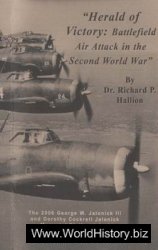Philadelphia, Pennsylvania, was a major U. S. metropolis during the antebellum period and the Civil War. Philadelphia began the 19th century as America’s largest port city, but by 1810 it had been overtaken in size and commercial activity by New York City. However, up through the Reconstruction period, it remained a bustling center of population growth and business. By the Civil War the city’s economic focus had gradually shifted from commerce to manufacturing, and Philadelphia had become one of the nation’s leading beneficiaries of the industrial revolution. In 1861 Philadelphia was the world’s largest textile center and an important center for iron and steel manufacturing, as well as heavy industry in the form of the Baldwin locomotive works.
The compact grid structure designed by William Penn had rapidly given way to five adjoining suburbs with semiautonomous governance. Suburbs and city formally combined through the 1854 Consolidation Act, undertaken to mitigate growth-related public chaos and administrative disorder. The ethnic composition of the city had become increasingly diversified, with large numbers of English, German, and Irish settlers arriving daily throughout this period. Philadelphia also boasted a relatively large population of free African Americans, in excess of 20,000, who owned and operated their own churches, businesses, and other separate institutions.
Politically, the city was preponderantly Democratic and enjoyed lucrative commercial relations with the South. Abolitionism was consequently less strong there than in other parts of the North. The Battle of Fort Sumter, South Carolina, in April 1861, however, brought Philadelphians strongly behind the Union cause. City Republicans founded a Union League in 1862 dedicated to preserving the country, and league members promoted patriotism and raised money and recruits for the war effort. Philadelphia’s economic and industrial base shifted smoothly to producing textiles for uniforms, locomotive engines and cars for army use, and numerous naval vessels for use in the Union blockade of Confederate ports. Moreover, Jay Cooke, an important city banker, provided an essential service by arranging a $1.5 million loan from city banks to assist the Federal government.
The site of one of the largest and most lavish Sanitary Fairs (fund-raising events for the Union) in 1864, the city further distinguished itself by raising the only Federal unit named after its city of origin. The Philadelphia Brigade, consisting of the 69th, 71st, 72nd, and 106th Pennsylvania Infantries, was organized in spring 1861 and was actively engaged throughout the eastern theater. Its soldiers fought exceedingly well in the Peninsular campaign and at the Battles of Antietam and Fredericksburg. At the Battle of Gettysburg they held the critical right Union flank along Cemetery Ridge; in this capacity they helped absorb the brunt of George Edward Pickett’s charge on July 3, 1863, taking 750 prisoners and three stands of enemy flags. Heavy casualties in this encounter led to the brigade’s disbandment, but the component units fought with other formations. Two of these, the 69th and 106th Pennsylvania Infantries, served through the remainder of the war and participated in the Grand Review of troops at Washington, D. C., in May 1865.
Philadelphia remained an active center for industry, arts, and population growth throughout Reconstruction. It maintained its status as the nation’s second-largest city until it was eclipsed by Chicago, Illinois, by 1890.
Further reading: J. Matthew Gallman, Mastering War-ti-me: A Social History of Philadelphia during the Civil War (Philadelphia: University of Pennsylvania Press, 2000); Jonathan W. White, ed., A Philadelphia Perspective: The Civil War Diary of Sidney George Fisher (New York: Fordham University Press, 2007).
—John C. Fredriksen




 World History
World History









